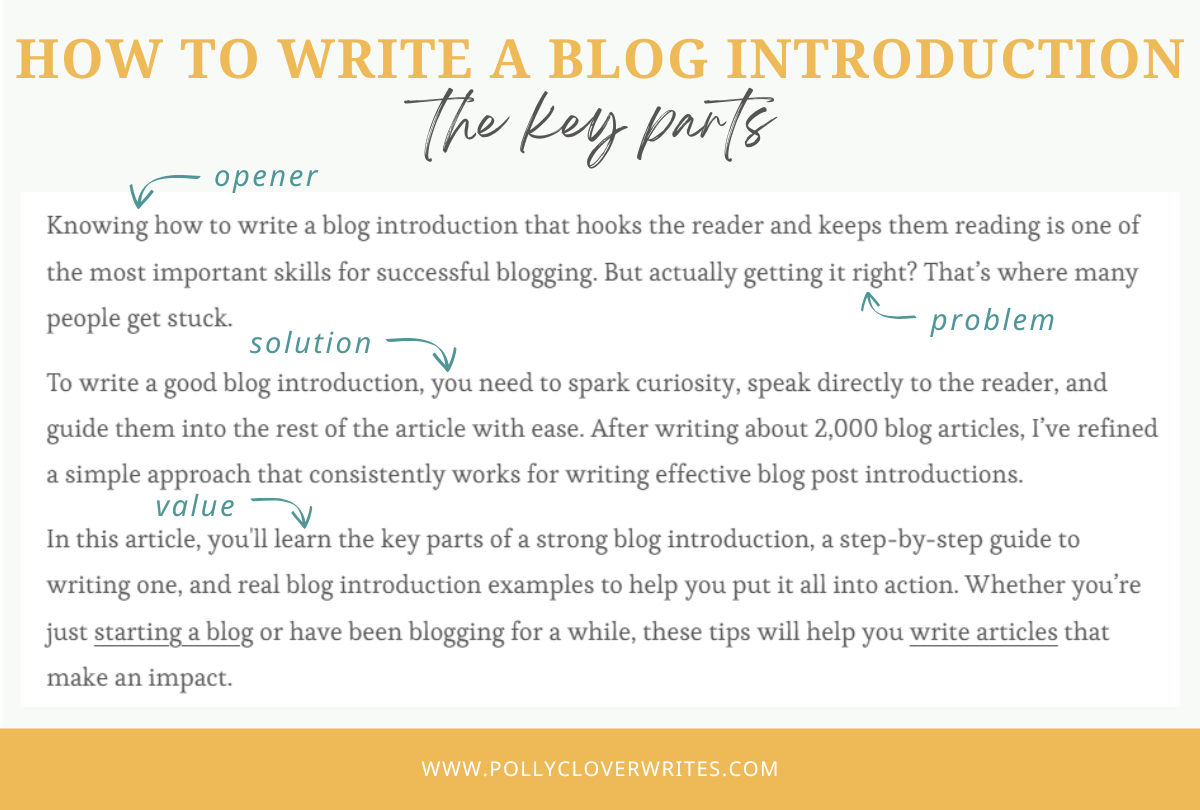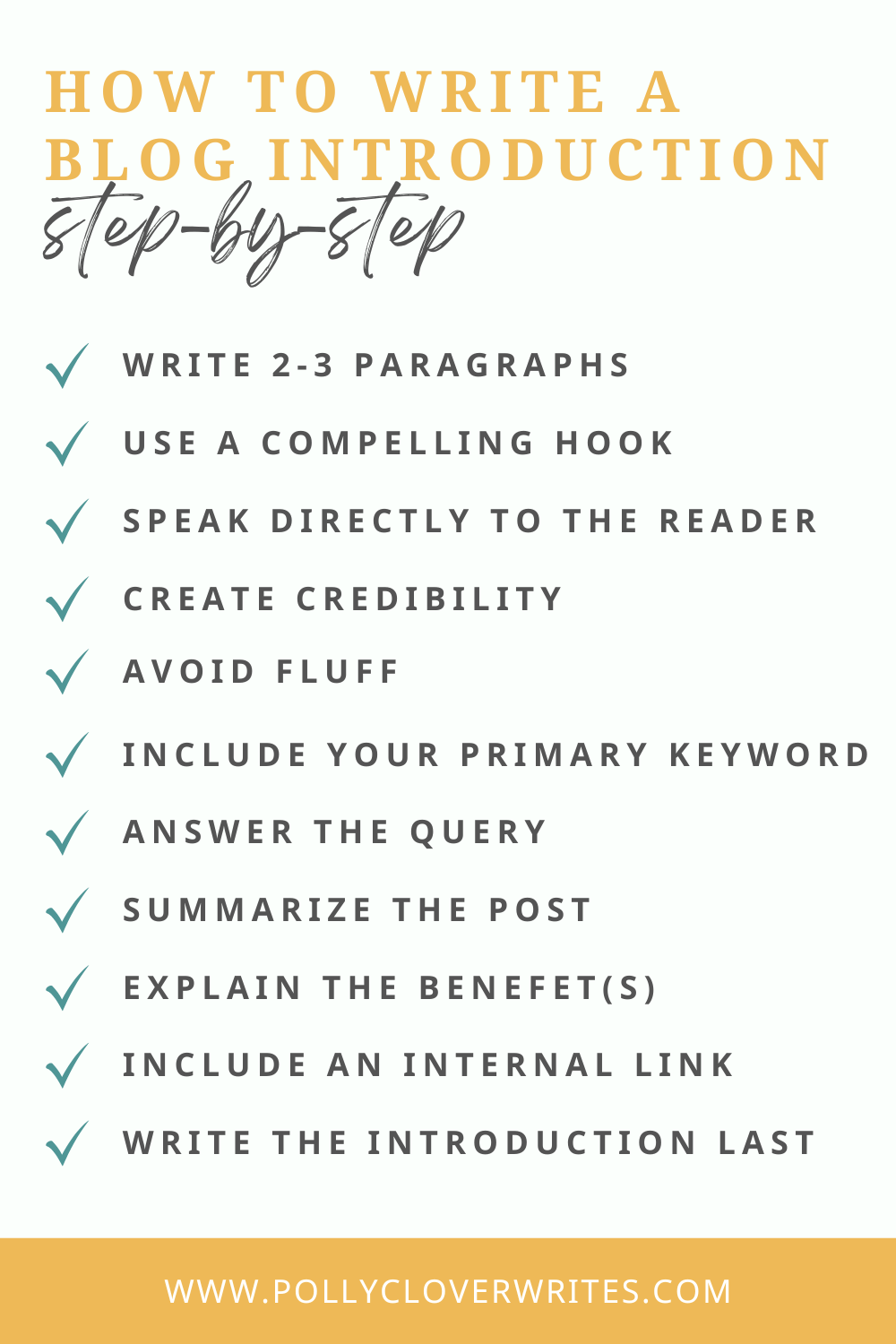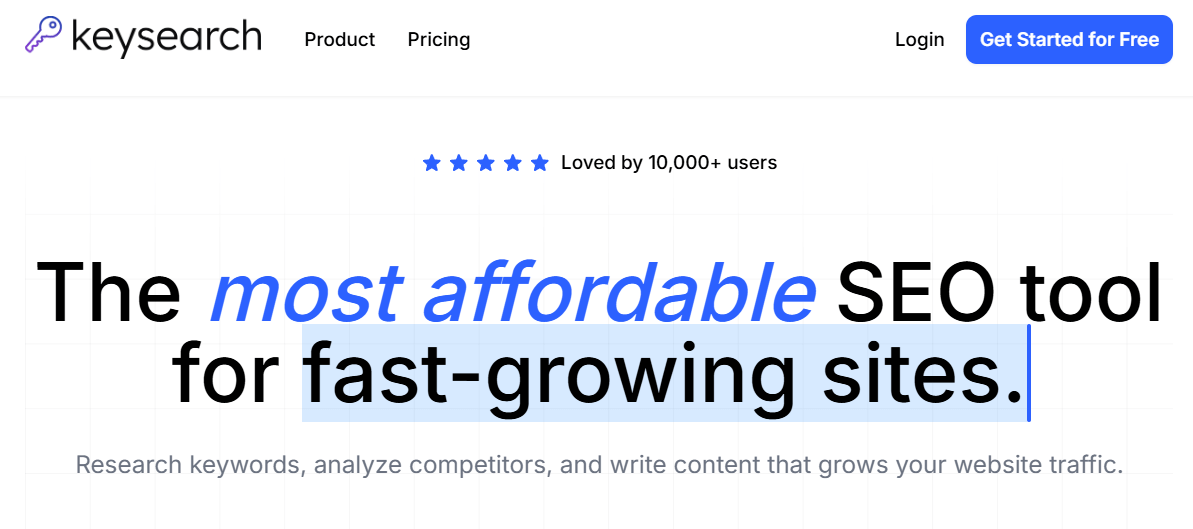How to Write a Blog Introduction: Helpful Tips & Examples
Knowing how to write a blog introduction that hooks the reader and keeps them reading is one of the most important skills for successful blogging. But actually getting it right? That’s where many people get stuck.
To write a good blog introduction, you need to spark curiosity, speak directly to the reader, and guide them into the rest of the article with ease. After writing about 2,000 blog articles, I’ve refined a simple approach that consistently works for writing effective blog post introductions.
In this article, you'll learn the key parts of a strong blog introduction, a step-by-step guide to writing one, and real blog introduction examples to help you put it all into action. Whether you’re just starting a blog or have been blogging for a while, these tips will help you write articles that make an impact.
Key Parts of a Blog Introduction
To write an effective blog post introduction, include the following parts:
Opener - This is your first sentence and should grab the reader's attention, which we often call the hook. It could be a bold statement, question, or unexpected fact.
Problem - Call out a relatable challenge your reader is facing to show you understand what they’re looking for.
Solution - Let the reader know your content will help them. Do this by briefly mentioning the approach you’ll take, referencing your experience, or teasing a practical tip you’ll share.
Value - Tell them what they’ll gain by reading so they know it’s worth their time. Whether it’s clarity, confidence, or a helpful how-to, make the benefit clear.
Here’s how I’ve included these key parts in the introduction of this article:
Key parts of a blog introduction
How to Write a Blog Introduction: Step-By-Step
Let’s walk through a step-by-step process to help you write a blog introduction that sets up your post for success.
Pin & save for later
1. Write Two to Three Paragraphs
Your blog introduction should get to the point quickly but be long enough to set the stage and build interest. Aim for two to three concise paragraphs.
Each paragraph can serve a purpose, like hooking the reader, introducing the problem and solution, and previewing what’s ahead. That said, the structure might vary depending on the topic and your writing style.
2. Use a Compelling Hook
Open with a statement that clearly shows why the topic matters. For example, your hook might emphasize the importance: “Knowing how to write a blog introduction that hooks the reader and keeps them reading is one of the most important skills for successful blogging.”
You could also share an interesting fact, statistic, or question relevant to your topic to grab attention quickly. Your hook will depend on the subject and tone of your article, but avoid bland or generic intros like, “Here’s everything you need to know about…” which doesn’t set your post apart from others.
3. Speak Directly to the Reader
Research shows that using second-person pronouns like “you” and “your” helps readers feel more involved and connected to the content. In blog introductions, this can help your message feel personal and relevant, which keeps people interested and encourages them to keep reading.
You might also use first-person words like “I” or “we” to build authority, but third-person pronouns like “they” usually feel too formal for blog writing.
4. Create Credibility
Give the reader a reason to trust you early on. You can do this by referencing your experience, such as “After writing over 2,000 blog posts…” or citing a relevant quote or statistic. This shows that you’re not just guessing, and you know what you’re talking about. Keep this brief but clear.
If you need quotes from subject matter experts to create credibility, free sites like Featured and Qwoted make it easy to request insights. For stats, try searching your topic followed by “research,” “study,” or “data” to find reliable sources you can link to.
Featured for reliable sources
5. Avoid FIuff
Every sentence in your intro should serve a purpose — either to hook, inform, or transition. With the average attention span being under one minute, any unnecessary content risks losing your reader’s focus.
Avoid vague or repetitive phrases like “In today’s modern digital age…” You can also remove unnecessary words like “basically,” “that,” and “just.”
6. Include Your Primary Keyword
Naturally include your primary keyword in the first paragraph of your blog introduction. This helps search engines like Google understand what your article is about, which can boost your chances of ranking. It also gives readers immediate clarity, so they know they’re in the right place.
If you're new to keywords, start by choosing one that aligns with your audience and offers. Short-tail keywords are broad and usually one to two words, like “blogging.” Long-tail keywords are more specific and often three or more words, like “how to write a blog introduction.” My favorite keyword research tool is KeySearch, which you can try free for seven days.
KeySearch for keyword research
7. Answer the Query
Clearly and concisely answer the reader’s main question in the introduction, which is usually your keyword phrase. For example, if your post is targeting “how to write a blog introduction,” you might say: “To write a blog introduction, you need to…”
You can also include a quick mention of a related problem to build trust and show readers you understand their needs. This not only reassures them they’re in the right place, but it also signals relevance to search engines and tools like ChatGPT, which can help increase your blog traffic.
8. Summarize the Post
Give the reader a preview of what's coming to motivate them to continue reading. Summarize the article in one sentence or a short paragraph. For example: "In this article, you'll learn the key parts of a strong blog introduction, a step-by-step guide to writing one, and real blog introduction examples to help you put it all into action."
9. Explain the Benefit(s)
Tell your reader what value they'll walk away with by the end of the post. This might be a new skill, a step-by-step process they can follow, or a simple framework they can apply right away. Focus on the outcome they care about based on the topic, and make it clear that the content is worth their time.
10. Include an Internal Link
Toward the end of your intro, include an internal link to another relevant post or page on your website. This gives those who might decide to stop reading a different opportunity to stay on your site. Internal links also help with SEO (search engine optimization) because it shows Google your site has helpful, connected content.
Make sure the link is relevant to the topic and placed where it feels helpful, not forced.
11. Write the Introduction Last
I've found that writing the introduction last is often easiest. Once you've laid out the rest of your article, it's easier to highlight the main points and the content's value.
You might also draft up the intro first, but come back and refine it later.
Blog Introduction Examples
Below are a few blog introductions I’ve written for my own website and for clients. Notice they’re written a bit differently, depending on the topic and brand. However, each one includes the opener, problem, solution, and value.

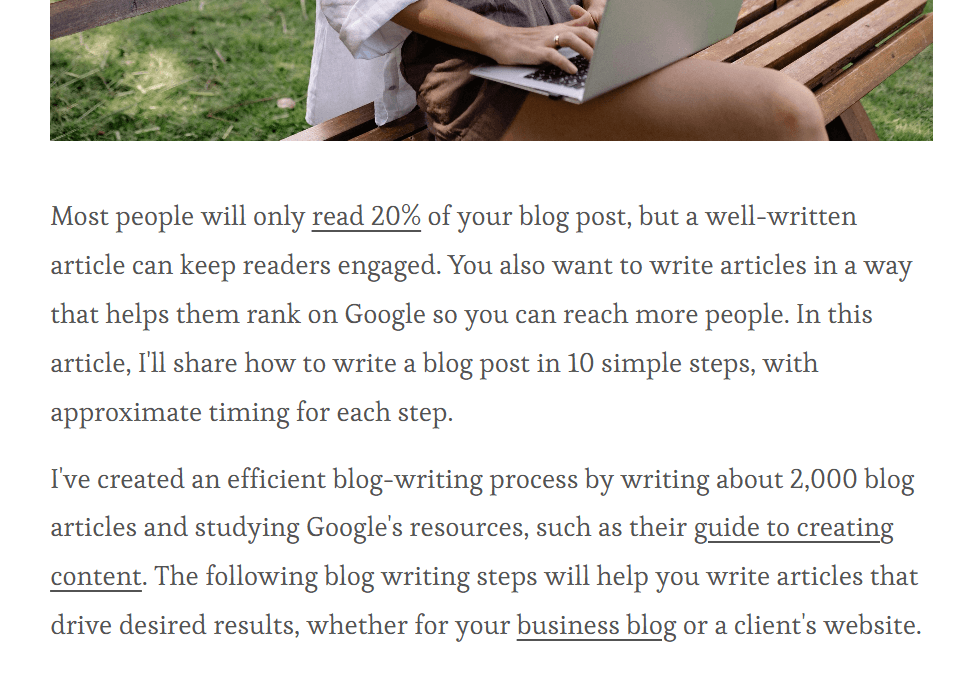
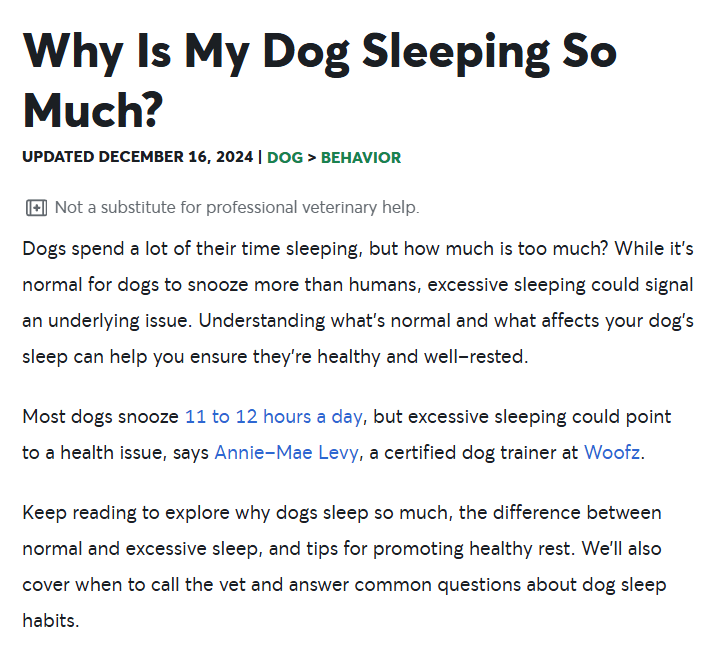

How to Write a Blog Introduction: Conclusion
Writing a blog post introduction doesn’t have to be complicated, but it does need to be intentional. A strong blog introduction hooks the reader, clearly answers what the article is about, and offers a reason to continue reading. With this, you set the tone for successful content that helps you meet your blogging goals.
Want more support writing blog articles that reach your target audience, build trust, and generate strong leads? Check out my SEO blogging course for step-by-step lessons, practical tips, and real-life examples.



